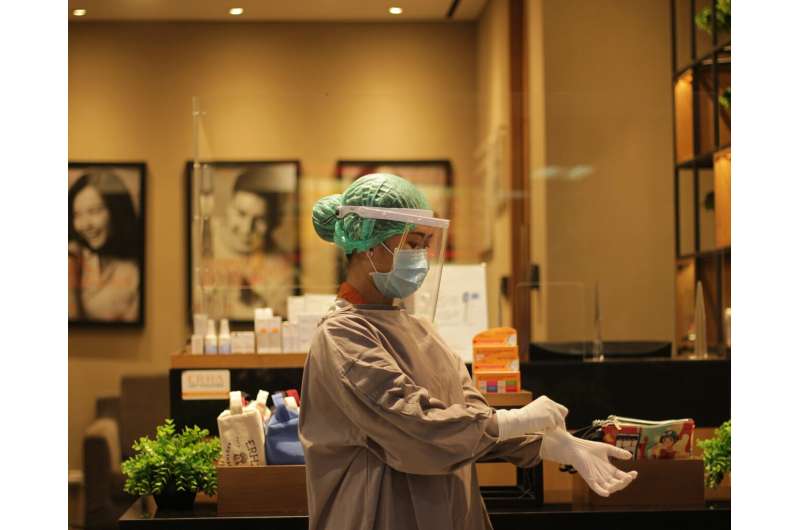
A review of COVID-19 transmission prevention studies found that many health care facility infection control policies are based on outdated models of how respiratory viruses are transmitted. Based on current best understanding of transmission, infection prevention methods should be revised. A narrative review including potential policy revisions is published in Annals of Internal Medicine.
Traditional teaching suggests that most respiratory viruses are spread through droplets. These are larger particles that are heavy enough that they will rapidly fall to the ground within one to two meters of an infected person. Public health agencies have traditionally advised healthcare workers to wear surgical masks to protect themselves from droplet organisms. The one exception has been for patients undergoing so-called, “aerosol-generating procedures” in which case higher levels of respiratory protection, such as N95 respirators, are recommended.
Researchers from Harvard Medical School, Harvard Pilgrim Healthcare Institute, and the University of Maryland reviewed published studies looking at SARS-CoV-2 transmission and infection control policies. They found that the traditional model of how respiratory viruses are spread may be incorrect. Most studies now suggest that respiratory viruses are primarily transmitted by aerosols. These are smaller respiratory particles that can remain suspended in the air for long periods of time, can travel beyond 2 meters from the source patient and, most importantly, can bypass surgical masks. People routinely generate aerosols whenever they exhale, particularly when speaking loudly, breathing heavily, or coughing. Most so-called “aerosol generating procedures” by contrast do not meaningfully increase aerosol generation relative to talking and heavy breathing.
Source: Read Full Article